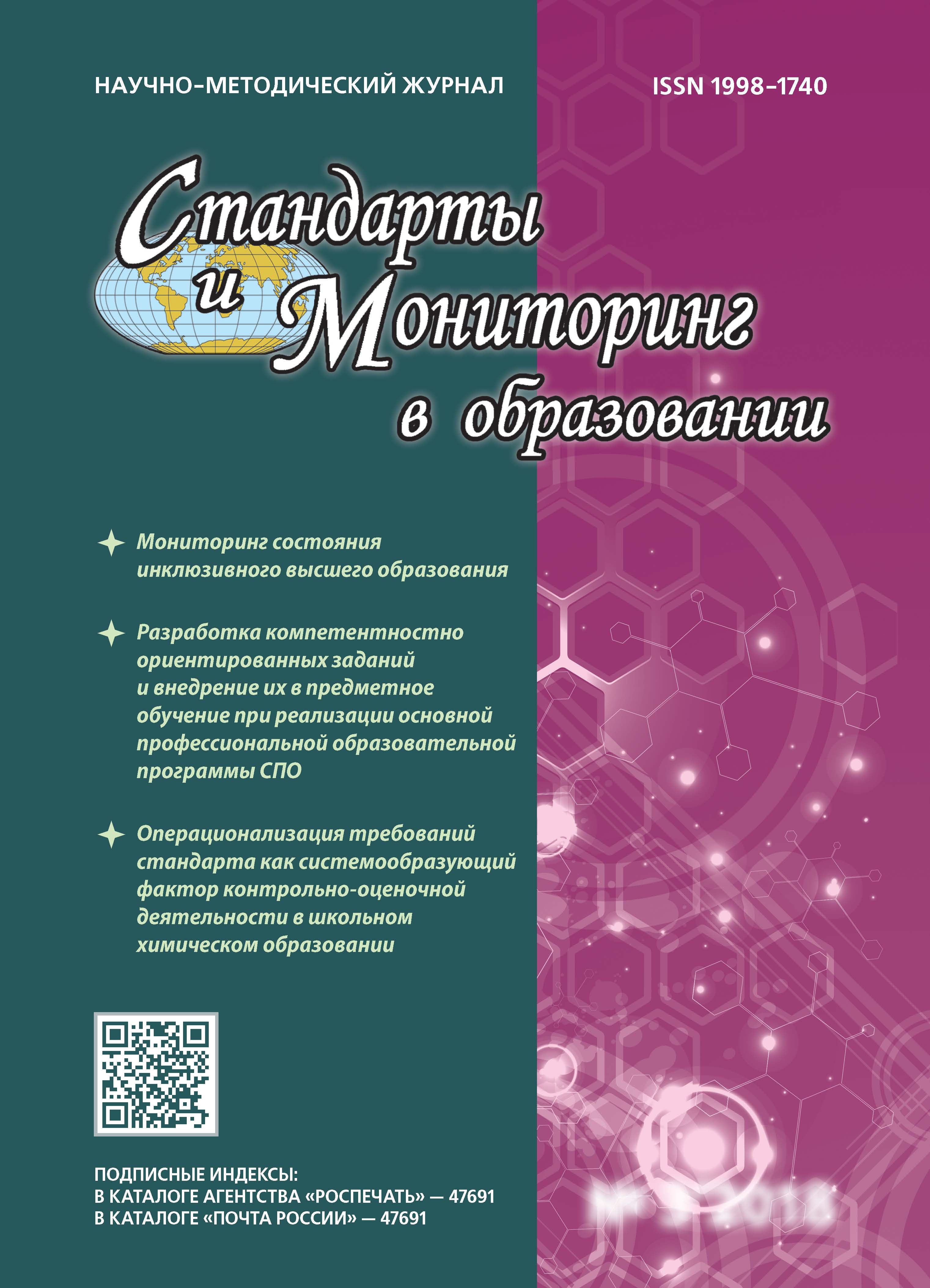from 01.01.2023 until now
Dushanbe, Tajikistan
from 01.01.2009 until now
Saratov, Saratov, Russian Federation
UDC 37
This article touches upon the problem of finding new, effective pedagogical means of teaching students of general education institutions, one of which is a situational task. The authors note the problem of constructing tasks of this type due to the absence of any methods for their compilation, give their own initial structure of the situational problem, demonstrating the need to make additional adjustments to it. The purpose of the article is to clarify the structural block of “Questions and Tasks” of a situational task using the selected taxonomy, which will eliminate the problem of compilation and selection, determining the number and sequence of questions in this block, as well as preserve the logical sequence of returning to the problematic question posed at the beginning after completing all the tasks of this block. Methodology. To achieve this goal, the authors carried out a theoretical analysis of the literature on the problem of constructing situational tasks, generalization of the information obtained, comparison of various taxonomies and selection of the most optimal for use, synthesis. Scientific novelty / theoretical and/or practical significance. The article solves the problem of composing questions and tasks of situational task, proposes a new detailed structure-the standard of a situational task, laying a unified approach to composing tasks of this type, as well as allowing teacherspractitioners to independently design them. Results. After the analysis of the scientific literature, several main taxonomies of educational purposes were identified (the taxonomy of B. Bloom with its existing modifications, V. Gerlach and A. Sullivan, A. de Blok, J. Guilford, R. Gagnier and M. Merill), the result of which was the choice of the original taxonomy of B. Bloom, characterized by high efficiency and ease of use in the future other teachers. The article also provides an example of a chemical situational task on the topic “Epoxides (oxyrans)” intended for 10th grade students, compiled using B. Bloom’s taxonomy. In conclusion, the conclusion is made about the success of the application of B. Bloom’s taxonomy for the construction of a block of “Questions and tasks” of a situational problem.
chemical situational task, taxonomy of educational goals, B. Bloom's taxonomy, task design
1. Halilova Sh.T. Technology of situational tasks design in the content of practical training. In: Otechestvennaya i zarubezhnaya pedagogika [Domestic and foreign pedagogy], 2012, no. 2(5), pp. 142-148. (In Russ.) EDN: https://elibrary.ru/PJUILL
2. Shabanova I.A., Kovaleva S.V. Case study in teaching the discipline «Methods of teaching chemistry». In: Vestnik Tomskogo gosudarstvennogo pedagogicheskogo universiteta [Tomsk State Pedagogical University Bulletin], 2015, no. 11(164), pp. 57-61. (In Russ.) EDN: https://elibrary.ru/VAVOOT
3. Zhulkova N.V. The using of the situational chemistry tasks in the educational process. In: Nauka i shkola [Science and School], 2013, no. 5, pp. 122-125. (In Russ.) EDN: https://elibrary.ru/RNGQSJ
4. Luzgina N.N. Situational tasks in chemistry as a means of developing key competencies. In: Dostizheniya fundamentalnoj, klinicheskoj mediciny i farmacii : materialy 73-oj nauchnoj sessii VGMU, Vitebsk, Respublika Belarus, 29-30 yanvarya 2018 goda [Achievements of fundamental, clinical medicine and phamacy: materials of the 73rd scientific. ses. VSMU, January 29-30, 2018]. Vitebsk: VSMU, 2018, pp. 575-578. (In Russ.) EDN: https://elibrary.ru/YRQPXD
5. Sagalakova A.M. Situational problems in chemistry as a means of learning. In: [Youth and the formation of science of the 21st centure: XVIII International scientific and practical forum of students, graduate students and young scientists, dedicated to the 85th anniversary of KSPU named V.P. Astafiev]. Krasnoyarsk: KSPU named V.P. Astafiev, 2017, pp. 132-135. (In Russ.) EDN: https://elibrary.ru/ZGJFOP
6. Kalugin I.A., Inshina T.V. Situational tasks as a way of developing students’ thinking in a Chemistry lesson. In: Uchebnyj eksperiment v obrazovanii [Teaching Experiment in Education], 2023, no. 1(105), pp. 66-75. (In Russ.) DOI: https://doi.org/10.51609/2079-875X_2023_1_66; EDN: https://elibrary.ru/NXMMAG
7. Prihodko M.A., Smirnova O.B. Situational task as a means of integration of fundamental and special knowledge. In: Internet-zhurnal “Mir nauki” [World of Science. Pedagogy and psychology], 2018, vol. 6, no. 3, 44 p. (In Russ.) EDN: https://elibrary.ru/UYZAJL
8. Klarin M.V. Innovative models in education: a worldwide study. Moscow : ‘Luch’ Publ., 2016, 632 p. (In Russ.) EDN: https://elibrary.ru/XCULWV
9. Kalugin I.A., Inshina, T.V. B. Bloom’s taxonomy as a fundamental component of situational problems in chemistry. In: Himiya i himicheskoe obrazovanie XXI veka: materialy VII Vserossijskoj studencheskoj konferencii s mezhdunarodnym uchastiem, posvyashennoj 110-letiyu so dnya rozhdeniya professora V. V. Perekalina i 60-letiyu fakulteta himii RGPU im. A. I. Gercena [Chemistry and chemical education of the XXI century: materials of the VII All-Russian student conference with international participation, dedicated to the 110th anniversary of the Faculty of Chemistry of the Russian State Pedagogical University named after A. I. Herzen, St. Petersburg, March 28-31, 2023]. St. Petersburg: RSPU named A. I. Herzen Publ., 2023, 232 p. (In Russ.) EDN: https://elibrary.ru/LHJCFA
10. Sultanova G.S. Bloom’s taxonomy as an instrument for intellectually developmental student training. In: Vysshee obrazovanie segodnya [Higher Education Today], 2019, no. 1, pp. 14-19. (In Russ.) DOI: https://doi.org/10.25586/RNU.HET.19.01.P.14; EDN: https://elibrary.ru/YSTHIT
11. Choshanov M.A. Learning Technology Engineering. Moscow: BINOM. Laboratoriya znanij, 2015, 242 p. [online]. Available at: http://files.pilotlz.ru/pdf/cC2973-1-ch.pdf (accessed 20.08.2023). (In Russ.)






